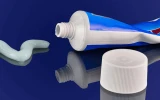How to Allergy-Proof Your Home This Spring
Published on Sep 21, 2020

Spring has well and truly sprung.
For most of us, the sun is shining, flowers are blooming, and the birds are chirping. For allergy sufferers, however, life in spring isn’t so sunny.
Here’s how you can minimise the triggers by learning how to allergy-proof your home. Relief starts now!
5 Home Cleaning Tips for Allergy Sufferers
1. Pet Problems

You shouldn’t have to choose between your furry friend and a life without allergies.
Usually, it’s the pet hair or the dander (flecks of skin) they shed that triggers allergies. However, for some, just the mention of a cat or dog close by can make their eyes water.
Even visiting a pet owner's home can get set off an allergy sufferer.
How to Avoid Pet Allergies
These strategies may prevent symptoms.
-
Are you thinking of introducing a pet into your home? Make sure it is a short-haired, hypoallergenic variety, which will shed far less hair than other breeds. This list from Everyday Health offers information on the best and worst breeds for allergy sufferers.
-
Your pet also shouldn’t sleep in your bedroom, and you should keep them well-groomed. A weekly bath for your pet will minimise the allergen count. Wash your pet’s bedding frequently, even more so during spring and summer.
-
When you’re vacuuming your carpet, a HEPA (High-Efficiency Particulate Air) filter vacuum will target pet dander effectively as it can successfully pick up smaller particles.
-
Remember to wash your hands after giving your pet a cuddle.
-
Consider having your carpets professionally cleaned regularly.
2. Pollen

The height of pollen season usually occurs between late September and December, according to the Australasian Society of Clinical Immunology and Allergy.
Pollen allergy occurs when pollen combines with water, creating particles small enough to be breathed into airways.
It is generally more common between 6 am and midday, with high pollen counts usually occurring on calm, hot days. Pollen is also associated with thunderstorms; long, warm days that end in lightning are an allergy sufferer's biggest enemy.
How to Avoid Pollen Allergy
-
Keep ahead of the game by knowing when Australia’s pollen counts are high and adapting your days accordingly. You can keep an eye on Australia’s pollen counts here.
-
Consistently vacuum the carpet, soft furnishings and wood/tiled floors to keep pollen counts down.
-
Dry your clothes inside or use a dryer instead of on a clothesline to avoid pollen being absorbed into clothing fabrics.
-
Remove shoes before coming inside or wipe your shoes on an abrasive mat at the door.
-
Pick an indoor plant like the Philodendron or an indoor palm variety to improve air quality. It’s worth noting that some plants produce pollen as part of their reproductive process, so do your research.
3. Dust Mites
Here is a creepy thought. There are thousands of dust mites occupying most homes.
Dust mites thrive in a warm, dark environment, which is why your mattress is one of their favourite places to live and feast on the dead skin cells we shed while we sleep.
These pests excrete twice their body weight daily and it’s this excrement that creates health issues. It contains 17 separate allergens and 7 different active enzymes that may enter our lungs and respiratory system, creating an allergic reaction.

How to Stop Dust Mite Allergies
-
You should be washing your bedding at least once a week with warm water and consider buying dust mite covers for added protection.
-
Dust mites hate UV light – take your mattress out into the sunshine for at least an hour every few months.
-
During warmer months and when you can during winter, open up your windows to let UV light in.
-
Invest in a vacuum with a HEPA (High-Efficiency Particulate Air) filter. These trap smaller particles of dust that a regular vacuum just recirculates back into your home.
-
A professional carpet cleaning service is a fantastic idea once a year for allergy sufferers. A professional carpet cleaner will have the equipment and experience to ensure your mattress is allergy-proof.
4. Mould
Your bathroom creates the moisture-rich and often humid environment that mould needs to prosper. Mould spores are known to trigger allergic or histamine reactions including a runny nose, breathing issues, sore eyes and lethargy.

Can I clean up mould myself?
Before you reach for the bleach, you can actually treat smaller mould contaminations with a 1:1 vinegar and water solution. Wipe down, let it dry and repeat if needed.
We highly recommend that you seek expert advice if your infestation is severe. An expert will treat the mould with specialised antibacterial and antifungal solutions, mist the air to treat spores and provide advice on the reason for the mould infestation.
To minimise the humidity, utilise DampRid or a dehumidifier in smaller spaces to remove moisture and inhibit mould growth. While showering, you should always use exhaust fans and ideally leave the fan running for at least 10 minutes after you step out of the shower to minimise condensation.
5. Air Conditioner
As the weather warms up, chances are your air conditioner will be getting a workout.
If you haven’t cleaned the air conditioner for an extended period of time, there could be a build-up of mould and other contaminants in there, which may be getting blown around your home (and into your airways) every time you need some comfort from the heat.

How can I purify the air in my home naturally?
You should be cleaning your air conditioner filters once or twice a year and ensure that you are following the manufacturer’s manual to ensure you don’t void your warranty.
Buy an indoor plant or two, such as the Peace Lily, Devil’s Ivy and Areca Palm. Some species of plants can improve air quality and alleviate symptoms. Your leaves should be very gently wiped down once a week to keep them dust-free and looking fantastic in your home.
Electrodry Air Conditioner Cleaning provides services that can ease the severity of your allergy triggers. In general, a clean home equals less dust and bacteria, to help you allergy-proof your home.




